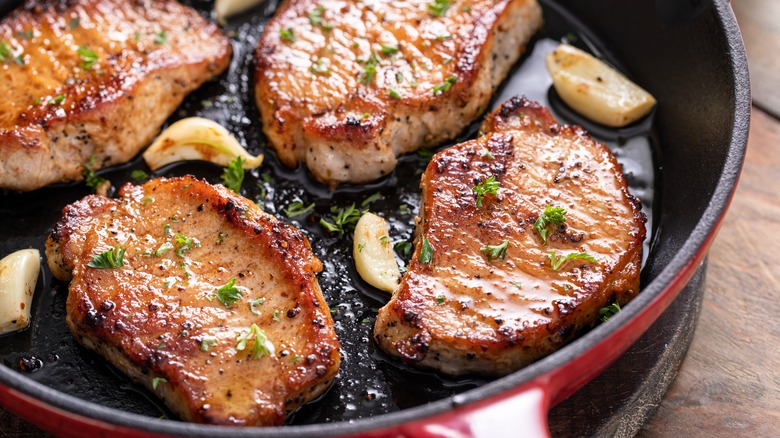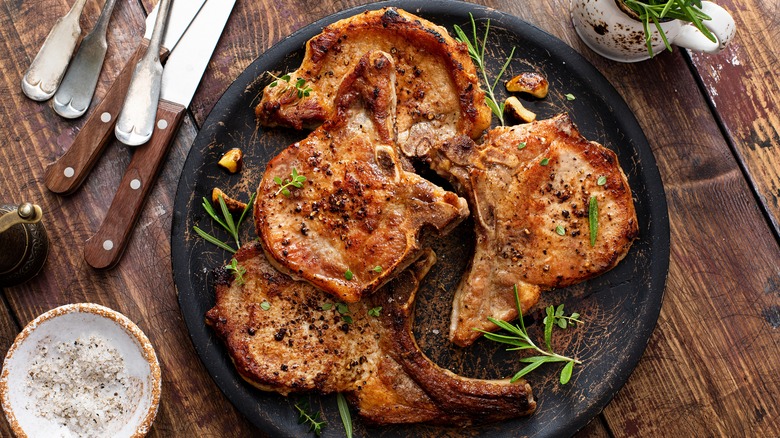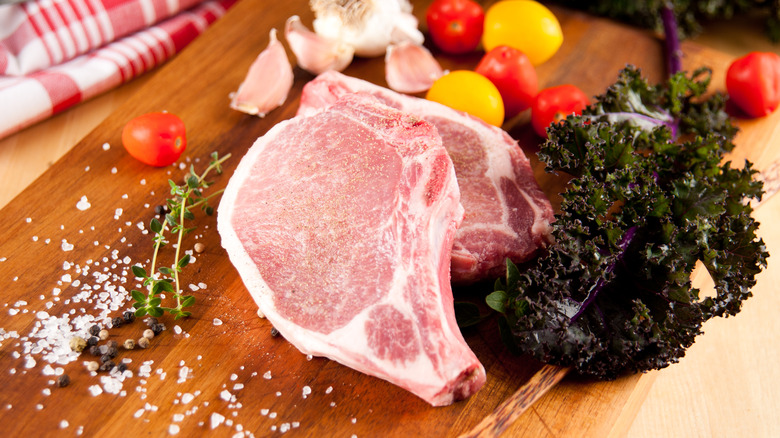The Time-Consuming Pork Chop Prep Step You Can Skip Entirely
Brining is a popular way to add flavor and up the juiciness factor of meat, so you might be surprised to learn that in some cases, it can actually be a waste of time. That's because certain cuts of meat are already deliciously succulent, so it's just a matter of cooking them correctly. In fact, all that added liquid from brining can sometimes even interfere with the browning process, which is more likely to lead to overcooking the middle of your protein as you try to get the outside just right.
This is especially true for pork chops, which are naturally moist all on their own. In fact, pork chops are ideal for quick meals without any time-consuming prep, so if you find that you need to whip up a spontaneous meal, they stand out as a top protein choice. Just make sure to use a calibrated meat thermometer so you can monitor the temperature, and enjoy a delicious pork chop dinner tonight.
Focus on browning pork chops without overcooking
The perfect pork chop is tender and moist, seasoned just right to complement the slightly sweet, mild meat. Achieving juicy pork chops isn't difficult, as long as they're cooked properly — so why do so many people think pork needs a brine? Fear of Trichinella roundworm infection, which can be found in pigs and passed on to humans through undercooked meat, might be to blame. As a result, the temptation to overcook pork chops is common. But this is unnecessary, as the center only needs to reach 145 degrees Fahrenheit.
Instead of relying on a brine to make up for moisture lost to overcooking, keep a meat thermometer handy. Not only will the pork chops brown better without that extra moisture, but cooking them to precisely 145 degrees ensures juicy chops. This technique works best with somewhat thick cuts (about one inch) since thinner ones might overcook in the center before they brown properly.
Wet seasonings that won't hurt the crust on pork chops
While a brine will disrupt the browning of pork chops, there are a couple of wet ingredients I like to use that don't interfere with developing a crust. Mustard is my favorite, complementing the pork's mild sweetness with a bit of tanginess. Instead of creating an unnecessary layer of moisture that negatively affects the crust, mustard cooks with the meat, helping to create a crisp exterior.
Another favorite is Italian salad dressing. Although it contains water, the oil balances it out. Along with bits of garlic and bell pepper, Italian salad dressing can form a delicious crust. Instead of using it as a marinade, which is an unnecessary step with pork chops, simply apply a little mustard or Italian dressing to both sides of the chops, and cook them in a hot skillet to an internal temperature of 145 degrees Fahrenheit for delectably juicy pork chops without any needless prep.



